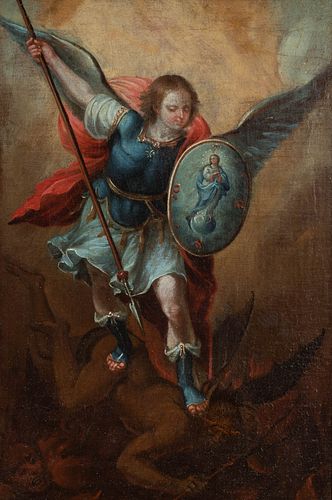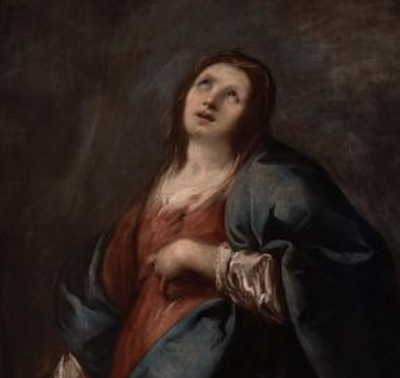New Spanish school of the 18th century. "San Miguel Arcangel". Oil on canvas. Reengineered.
Lot 94
About Seller
Setdart Auction House
Carrer Aragó 346
Barcelona
Spain
Setdart Subastas was born in 2004 and is currently the first online art auction in Spain with solidity, prestige and reliability guaranteed by our more than 60,000 users. Setdart has a young, dynamic and enterprising team ready to successfully manage the purchase and sale of art works through custom...Read more
Estimate:
EUR€6,000 - EUR€8,000
$6,451.61 - $8,602.15
Absentee vs Live bid
Two ways to bid:
- Leave a max absentee bid and the platform will bid on your behalf up to your maximum bid during the live auction.
- Bid live during the auction and your bids will be submitted real-time to the auctioneer.
Bid Increments
| Price | Bid Increment |
|---|---|
| EUR€0 | EUR€10 |
| EUR€200 | EUR€25 |
| EUR€500 | EUR€50 |
| EUR€1,000 | EUR€100 |
| EUR€3,000 | EUR€200 |
| EUR€5,000 | EUR€500 |
| EUR€10,000 | EUR€1,000 |
| EUR€20,000 | EUR€2,000 |
| EUR€50,000 | EUR€5,000 |
About Auction
By Setdart Auction House
May 31, 2021
Set Reminder
2021-05-31 08:30:00
2021-05-31 08:30:00
America/New_York
Bidsquare
Bidsquare : OLD MASTERS - Day 1
https://www.bidsquare.com/auctions/setdart-auction-house/old-masters---day-1-6998
Setdart Auction House sofia@setdart.com
Setdart Auction House sofia@setdart.com
- Lot Description
New Spanish school of the 18th century. "San Miguel Arcangel". Oil on canvas. Reengineered. Measurements: 39 x 27 cm; 51 x 39 cm (frame). In this painting of purely baroque language, the archangel St. Michael is represented, dressed in armor, with large wings spread out. The Archangels are the highest level of the Third Order in the angelic hierarchies, and are the only ones among them who have names. As for the West, the Lateran Council (746) limited the number of archangels to worship three (Michael, Gabriel and Raphael), a circumstance that changed after the discovery in 1516 of a fresco in the church of San Angelo of the Carmelite order in Palermo in which the Trinity appeared with the seven archangels, which, moreover, would be reproduced (sometimes with variations) by numerous engravings, thus extending the iconography. Saint Michael the Archangel is a military saint, and therefore patron saint of knights and of all trades related to weapons, as well as to the scales, due to his role as apocalyptic judge. His iconography is of considerable richness, but relatively stable. As a general rule, he appears in the attire of a soldier or knight, holding a spear or sword and a shield decorated with a cross. When he fights the dragon, he fights on foot or in the air, which distinguishes him from St. George, who is almost always on horseback. However, the great difference between the two saints is St. Michael's wings. It is worth mentioning that, during the Spanish colonial domination, a mainly religious painting was developed, aimed at Christianizing the indigenous peoples. The local painters were modeled on Spanish works, which they followed literally in terms of types and iconography. The most frequent models were the harquebusier angels and the triangular virgins, however, in the first years of the 19th century, already in times of independence and political opening of some of the colonies, several artists began to represent a new model of painting with its own identity.
- Shipping Info
-
In-house shipping available. Please inquire at admin@setdart.com.
-
- Buyer's Premium



 EUR
EUR CAD
CAD AUD
AUD GBP
GBP MXN
MXN HKD
HKD CNY
CNY MYR
MYR SEK
SEK SGD
SGD CHF
CHF THB
THB















